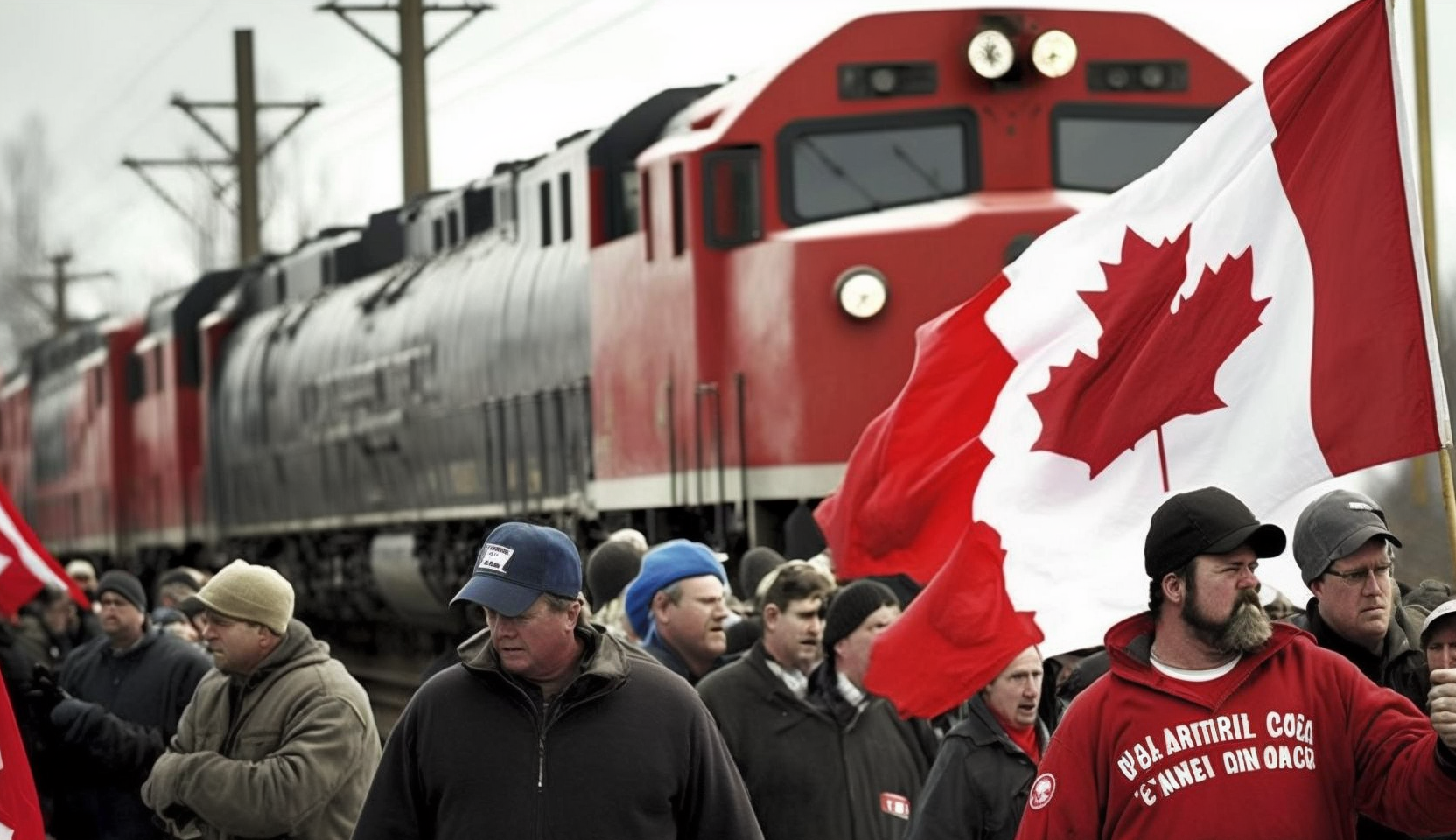| Key Points: – CN and CPKC lock out over 9,000 unionized workers, halting rail operations – Fears of billions in economic damage and supply chain disruptions across North America – Work-life balance and scheduling at the core of the labor dispute |
As the clock struck midnight on Thursday, Canada’s rail network screeched to a halt, plunging the country into an unprecedented crisis that threatens to derail its economy and send shockwaves through North American supply chains. The nation’s two railway giants, Canadian National Railway (CN) and Canadian Pacific Kansas City (CPKC), have locked out over 9,000 unionized workers, triggering a standoff that could cost billions and leave industries scrambling for alternatives.
The lockout comes after failed negotiations between the railway companies and the Teamsters Canada Rail Conference (TCRC), with both sides blaming each other for the breakdown in talks. At the heart of the dispute are issues surrounding scheduling, labor availability, and demands for improved work-life balance. The introduction of new duty and rest period rules by the Canadian government in 2023 has further complicated matters.
The economic impact of this rail stoppage is expected to be severe. Moody’s, a prominent ratings agency, estimates that the daily cost could exceed C$341 million ($251 million). The halt in rail operations is set to cripple shipments of vital commodities such as grain, potash, and coal, while also slowing the transport of petroleum products, chemicals, and automobiles. The repercussions are expected to extend beyond Canada’s borders, affecting businesses in the United States due to the highly integrated nature of the two economies.
Adding to the chaos, tens of thousands of commuters in major cities like Toronto, Vancouver, and Montreal have been left stranded as train movements on CPKC-owned commuter lines have ceased. This has prompted urgent calls from local officials, including Ontario Premier Doug Ford, for a swift resolution to the dispute.

The Canadian government has thus far refrained from invoking its power to force binding arbitration, instead urging the parties to continue negotiations. However, as the economic toll mounts, pressure is likely to increase on the government to intervene more directly.
For the locked-out workers, primarily conductors, locomotive engineers, and yard workers, the core issues revolve around work schedules and rest periods. CN’s proposal to extend shifts up to 12 hours, in line with government norms, has met strong resistance from the union. Workers are particularly concerned about the potential reduction of rest periods and the unpredictable nature of on-call work.
As picket lines form and negotiations continue, the broader implications of this dispute are becoming increasingly apparent. Analysts predict significant hits to the profits of both CN and CPKC, with each day of the lockout estimated to impact earnings per share.
This unprecedented rail stoppage serves as a stark reminder of the critical role transportation infrastructure plays in the North American economy. As businesses, commuters, and government officials grapple with the fallout, all eyes remain on the negotiating table, hoping for a swift resolution to this disruptive and costly labor dispute.
